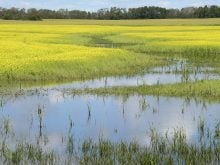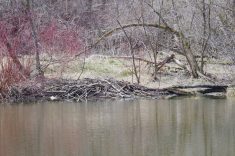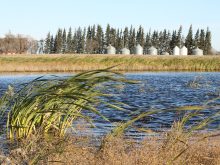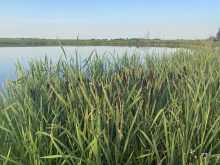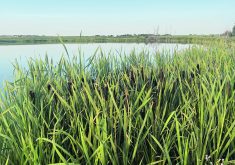YORKTON, Sask. — Saskatchewan continues to wrestle with how best to allow agricultural water drainage while retaining wetlands.
The Water Security Agency recently completed consultation on a draft policy that would use a per-network approach to retaining a certain percentage of wetlands.
It would use a floor concept within the network, or a conservation and development area, to determine the wetlands that exist and how much would have to be kept to meet a certain retention goal.
Krystal Tendler, executive director of agricultural water management at WSA, said the province is so diverse that a regional approach is required. Provincially, the floor is about 29 percent, she said, but it varies.
Read Also

StatCan stands by its model-based crop forecast
Statistics Canada’s model-based production estimates are under scrutiny, but agency says it is confident in the results.
She said the establishment of a floor within a region recognizes that producers are great stewards who are already retaining wetland.
“In fact, we’re at 86 percent of our original wetlands are still intact and there’s a lot of those wetlands that will never be drained,” she said in an interview.
Most of those wetlands are protected through provincial easements, said Tendler.
“On top of that floor, we say there probably still needs to be some amount, or more retention, that landowners should be responsible for, but we want to leave that flexibility with the landowner to decide,” she said.
This policy is not set in stone, she added, and it will likely be 2025 before a final version is in place.
Members of the Saskatchewan Farm Stewardship Association, who promote water management through drainage, like the fact that regional differences will be considered, president Myles Thorpe said after Tendler presented at the organization’s annual meeting.
“That’s a very important thing. Every area is different, whether it’s within a (rural municipality) or 100 miles apart,” he said.
“We do like the fact they’re taking into account soil health as a major component of it. That’s one of the main drivers of why we drain or manage water is to improve that soil health, to get rid of salinity, so that we are using our fertilizer efficiently and we’re not wasting in that regard.”
Good water management will benefit farmers and the provincial economy, he said.
“We’re going to continue working with Water Security Agency on these policy items, and if we can come to agreements on things down the road, that’s what we hope for,” said Thorpe.
The stewardship policy replaces a mitigation policy floated in 2019.
It was developed after 2015 regulations established the Agricultural Water Management Strategy but left out how drainage could occur while satisfying other needs and concerns.
At the time, the government estimated about 150,000 quarter sections had unapproved drainage works. It required all works to come into compliance or be closed.
It also encouraged water management through conservation and development authorities. That was designed to help alleviate the neighbour-versus-neighbour tensions that still occur.
The mitigation plan considered requiring landowners to hold back water at specific times and could have allowed them to retain upland habitat in exchange for draining small sloughs of less than an acre.
But with little stakeholder support, the WSA went back to the drawing board.
It was during this latest consultation that the wording changed from mitigation, which was seen as negative, to stewardship.
One person attending the SaskFSA AGM said any policy will have farmers on the defensive because all drainage is seen as bad.
“The way to solve this, in my opinion, is to make a line: this is drainage and this isn’t,” he said.
He said in the Qu’Appelle River system, for example, water quality is likely going to continue to deteriorate even if farmers retain more wetlands.
Another said that’s an absolute certainty. He said allowing farmers to retain a certain wetland while draining all the others is not stewardship.
“I heard you say stewardship or mitigation policy is retention. Well mitigation is avoidance, minimization and compensation. If you’re saying retain these but do what you want with those, you’re absolutely not even touching mitigation,” he said.
He said there have to be stipulations to be sure water quality is managed.
“Otherwise … you’re going to have 50 percent left but your water quality is going to (suffer), your habitat’s gone and everything else.”
Tendler said because all drainage works have to be in compliance, the flow and erosion controls will manage downstream impacts. There are no rules right now, however, on how much water can be let go, and this policy would put guidance in place.
The policy does not include environmental non-governmental organization lands, such as those owned by Ducks Unlimited, nor does it include wetlands on First Nations.
However, another meeting attendee said that’s a mistake because wetlands on those lands do contribute to both the floor and runoff.
Other SaskFSA members said a made-in-Saskatchewan approach to the issue is critical because they don’t want the federal government to impose a policy.
Several WSA research and demonstration projects helped to inform the proposal.
It includes five other points aside from agricultural stewardship:
- Water quantity that supports a landscape resilient to both flood and drought.
- Water quality for all uses.
- Biodiversity and habitat.
- Productive and profitable farms.
- Collaborate and find local solutions that build public trust in agriculture.






